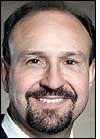As with other medical centers, employees at Southern Ohio Medical Center (SOMC), located in Portsmouth, Ohio, have spent hours each week walking the floors of the hospital, searching for such items as pumps, EKG carts and wheelchairs. In some cases, the staff has also sent out e-mails seeking specific items.
On a monthly basis, the staff at SOMC search for and inspect up to 700 pieces of equipment. Of the items they inventory, most are easy to find, says Greg Malone, the hospital’s supervisor of biomedical engineering. It’s the 20 to 30 percent of items that are difficult to locate that had become a burden on hospital staff, he says, prompting the medical center to seek an RFID-based system to help it track assets.
In October 2007, Malone says, SOMC deployed the Radianse Reveal Asset Tracking platform, made by Radianse. Thus far, the hospital has purchased 2,500 Radiance 433 MHz active RFID tags and tagged 1,600 assets. Some tags come with an adhesive backing for attaching to assets, while others have a lanyard for attachment to the leg of a medical device.
To associate a tag with the asset to which it is attached, says Paul Tessier, Radianse’s founder, chief strategic officer and executive VP, employees use a handheld bar-code scanner to read the bar code printed on the tag, which holds the same unique ID number stored on the RFID chip. The staff then input details about the item, such as its make and model, and store that data in the medical center’s database. Tessier says the reusable tags include a replaceable battery that has a two-year lifespan if the tag beacons every 10 seconds, and six years if it beacons every 30 seconds.
A network of 364 receivers, connected to SOMC’s server via Ethernet cables, has been installed throughout the hospital, spaced about 30 feet apart. The receivers can read a tag from up to 50 or 60 feet away, and can pinpoint its location with an accuracy of up to 3 feet. When three or more receivers pick up a tag’s ID number, Radianse’s software determines its location based on the strength of the signal. “We wanted room-level accuracy,” Malone explains.
The software allows hospital workers to open a Radianse link on any PC in the building, and enter a key word to search for a specific item. They can also set up a “favorites” listing for any items they frequently look for, such as a wheelchair or IV caddy.
The system can be set to transmit an alert if an item enters the wrong area. For example, if a medical device that cannot be washed is brought to a laundry area, staff members can receive an alert. In the case of a manufacturer recall, hospital workers could quickly find all specific devices that need to be recalled, saving hours of time otherwise spent looking for items that could be spread throughout the facility.
When SOMC first started exploring RFID a decade ago as a means of automatically tracking its high-value assets, the hospital found that a system large enough to meet its needs would have cost about $750,000—an expense it could not justify. But after re-examining the technology in late 2006, it found the cost had dropped 40 percent, to roughly $400,000. That convinced the hospital to take another look.
In August 2007, Radianse installed receivers and SOMC began tagging items. Employees started receiving training in September 2007, and the necessary hardware and software was fully installed in October. Even before training, Malone says, staff members were learning the Radianse system on their own, locating wheelchairs and other items without leaving their PCs.
The 220-bed hospital is building a two-tower expansion with 102 patient suites, surgery departments and a cardiac care tower. It plans to outfit the new expansion with enough receivers to track tagged assets throughout the area. In the future, Malone says, SOMC intends to expand the system to include patient tracking, though it has not yet decided when that will occur. It also intends to integrate the system with its own office management, including billing.
“We’re very happy—it’s a neat thing,” Malone says. With the RFID system, he adds, the staff has that much more connection to each other and their assets. “We’re a small-world community here,” he states.
Other hospitals that have deployed the Radianse platform include the Providence Health Center in Waco, Texas (see Providence Health Center Calls Its RFID System an ‘Eye-Opener’), and St. Vincent’s Hospital in Birmingham, Ala., (see RFID Frees Up Patient Beds).


